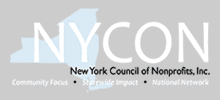St. Elizabeth’s Medical Center
Matthew Babcock, Vice President and Chief Operating Officer of SEMC, said that the hospital fosters fiscal growth by:
- Employing about 1,950 direct employees.
- Spending $189 (2008 figure) million annually on improvements to the facility, payroll for employees, and ordering supplies and equipment.
SEMC has generated even more income for the local community with their College of Nursing, School of Radiography, and Family Practice Residency Program (FPR), Babcock said. Over 50 percent of the FPR students stay in the local community and become health care providers in the Mohawk Valley, he said.
Faxton St. Luke’s Healthcare
FLSH’s contribution to Utica and the surrounding areas is also substantial. FSLH has two campuses; Faxton on Sunset Ave. in Utica and St. Luke’s on Champlin Ave. in New Hartford. Michael Haile, Senior Vice President and Chief Financial Officer for FSLH, said their facilities directly benefit the local community by:
- Employing 3,500 employees between the two locations
- Issuing $108 million annually in employee paycheck and $26 million worth of employee benefits
- Spending an estimated yearly sum of $45 million of locally ordered supplies
- Spending an average of $12 million on capital investments that employee contractors
On top of that SEMC and FSLH provide millions to the local community in free health care every year. The free health care figures encompass two branches; charity care and bad debt. Both establishments test the ability for their patients to pay their bill based on a number of variables. If it is determined that the patient does not have the economic ability to pay their costs they are placed in charity or uncompensated care programs.
Free care from bad debt comes from from medical bills that were not paid by the patient. After time the hospital writes off the delinquent bill and takes the loss.
Last year SEMC provided over $8 million in free care.
FSLH provided $10.8 million.
Babcock said that despite all the benefits non-profit health care facilities have provided, he still hears people complain about them having the benefit of being tax free. He said he often hears people ask what not-for-profits give back to the local community. SEMC non-profit status allows them to sponsor community events, encourage employee volunteering, and provide education to students and seniors, Babcock said.
“I can tell you all the great things not-for-profits do, but I think that’s not what they really struggle with,” Marietta said. “It’s trying to get people to look at them as a business and trying to get people to understand the integral role they play in the community.”













No comments:
Post a Comment